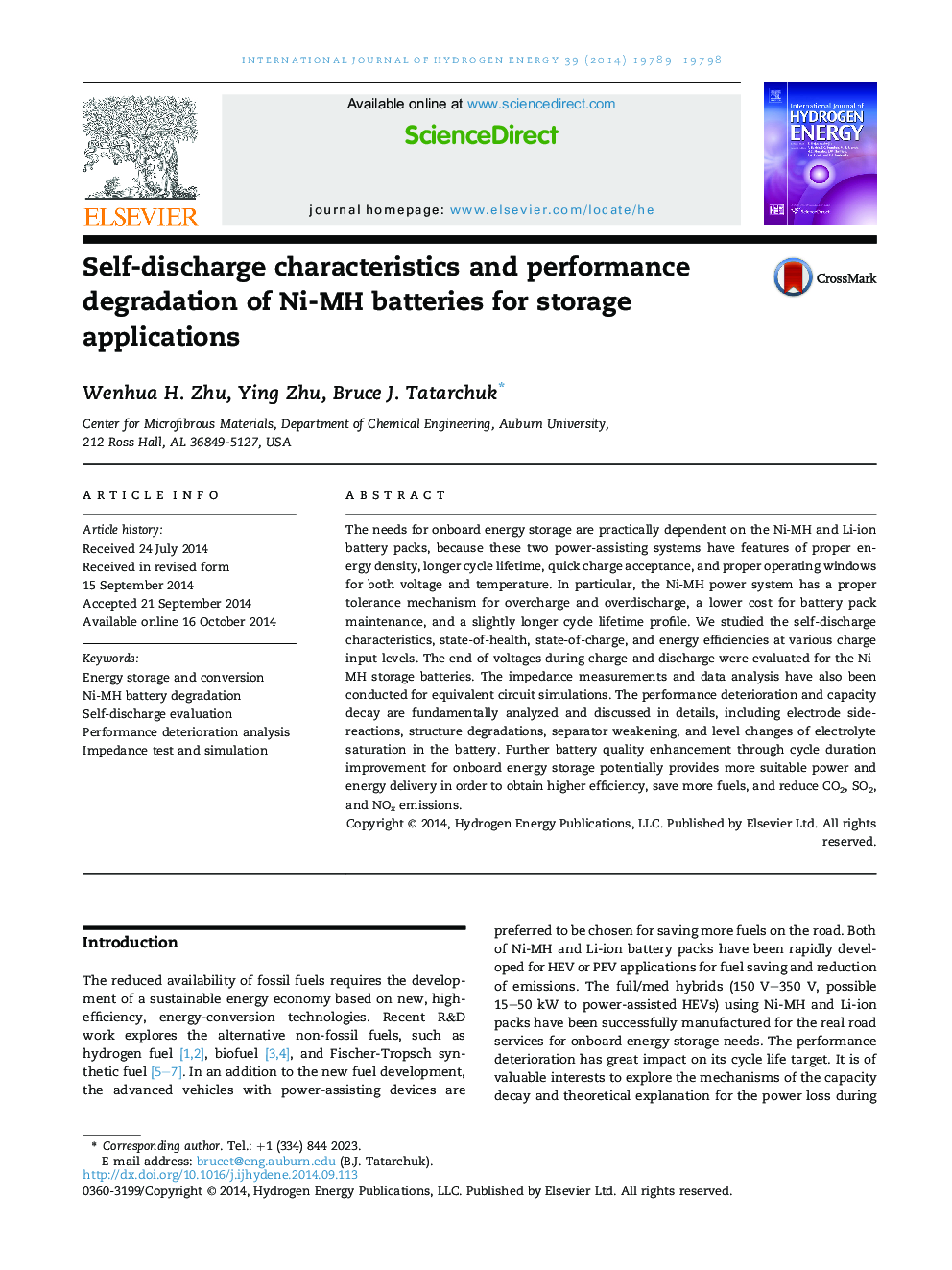| Article ID | Journal | Published Year | Pages | File Type |
|---|---|---|---|---|
| 1280731 | International Journal of Hydrogen Energy | 2014 | 10 Pages |
•Capacity degradation and voltage drop rates were obtained during the Ni-MH battery self-discharge.•State-of-health of the Ni-MH batteries was evaluated through the ratio of the measured capacity to the nominal capacity.•Battery rate capability was studied by measurement of EoCV, EoDV, and energy efficiency.•Impedance tests and simulation via an equivalent circuit model were conducted on the Ni-MH batteries.•Performance degradation is discussed and summarized for energy storage improvements.
The needs for onboard energy storage are practically dependent on the Ni-MH and Li-ion battery packs, because these two power-assisting systems have features of proper energy density, longer cycle lifetime, quick charge acceptance, and proper operating windows for both voltage and temperature. In particular, the Ni-MH power system has a proper tolerance mechanism for overcharge and overdischarge, a lower cost for battery pack maintenance, and a slightly longer cycle lifetime profile. We studied the self-discharge characteristics, state-of-health, state-of-charge, and energy efficiencies at various charge input levels. The end-of-voltages during charge and discharge were evaluated for the Ni-MH storage batteries. The impedance measurements and data analysis have also been conducted for equivalent circuit simulations. The performance deterioration and capacity decay are fundamentally analyzed and discussed in details, including electrode side-reactions, structure degradations, separator weakening, and level changes of electrolyte saturation in the battery. Further battery quality enhancement through cycle duration improvement for onboard energy storage potentially provides more suitable power and energy delivery in order to obtain higher efficiency, save more fuels, and reduce CO2, SO2, and NOx emissions.
